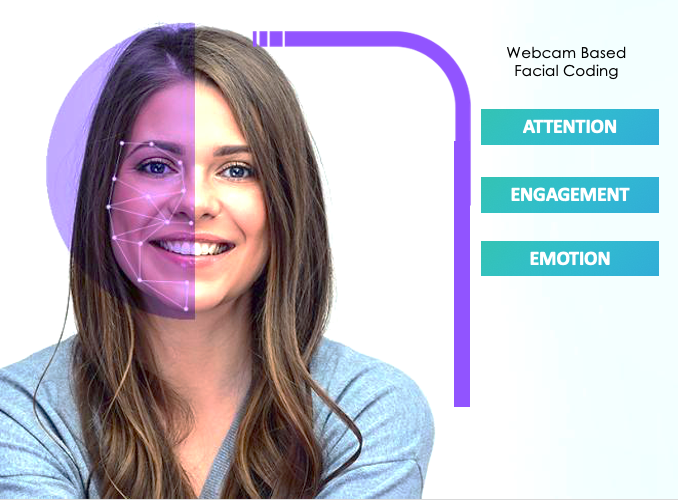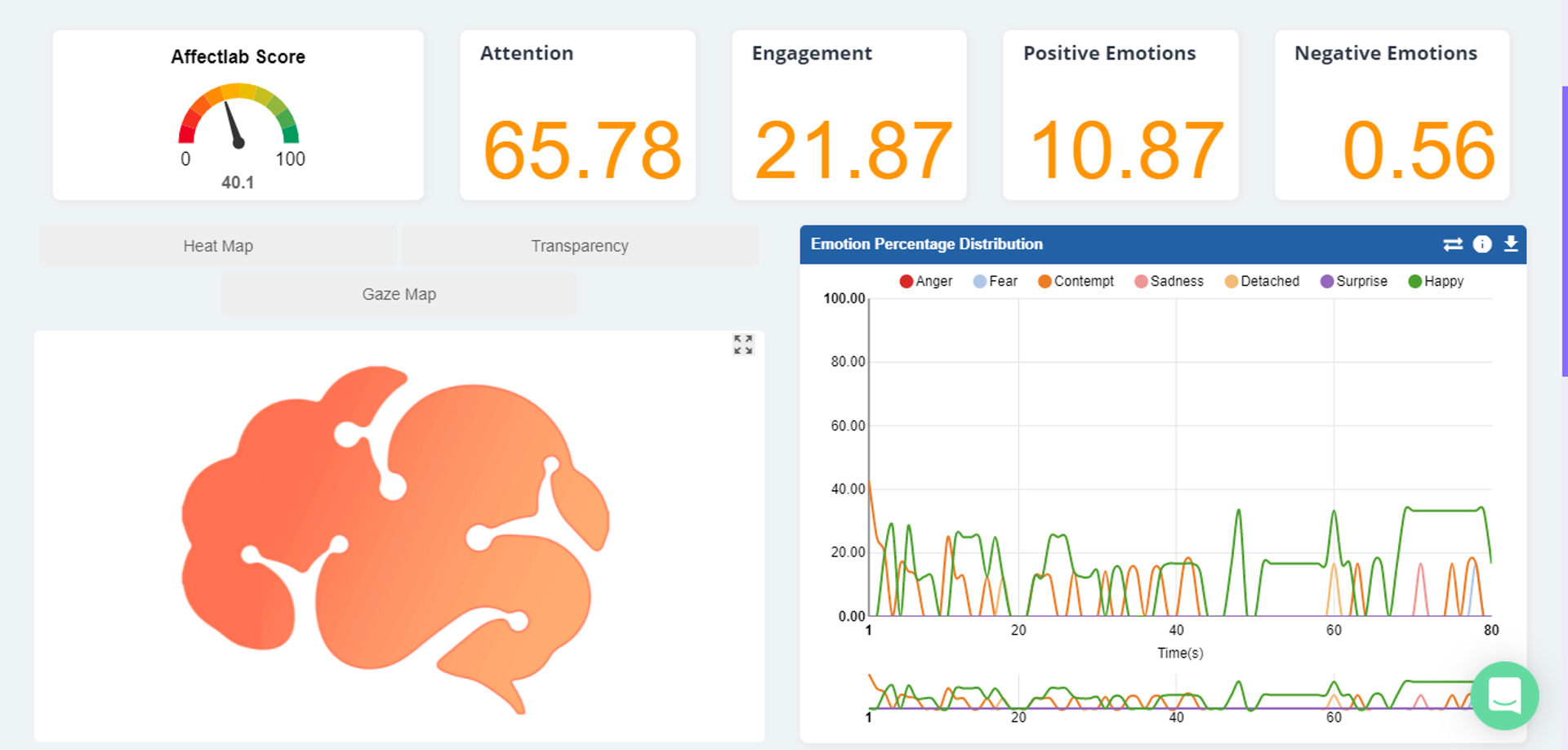Actionable Insights using Facial Coding
Facial coding is the process of measuring human emotions through facial expressions. Emotions can be detected by computer algorithms for automatic emotion recognition that record facial expressions via webcam. This can be applied to understand people’s reactions to visual stimuli better.

Facial Coding Insights in Media Insights Campaigns
As researchers try to study the efficacy of their ads, banners, posters, trailers, episodes, promos, etc. in Media Insights Campaigns, Facial Coding enables us to find the below insights about the creative.
Attention: In this ferociously competitive environment, companies need to know the best practices for capturing and retaining consumer attention.
The attention towards a media (an advertisement or an image) gives the organization a clear picture of the audience's reaction towards their product.
The above picture is an example of attention towards the media.
Engagement: "Engagement " in any media is a two-way experience. This is basically seeking connection with people and brands.
Engagement is measured using the emotions displayed by the customers. It is the percentage of impressions received on a particular media.
Positive Emotions: The sum of happiness and surprise emotions depicted by the respondent when they watch any stimuli.
Negative Emotions: The sum of sad, detached, and angry emotions depicted by the respondent when they watch any stimuli.
Facial Coding Insights in Shopper Insights Campaigns
As researchers try to study the efficacy of their Pack Design, Product Placement, etc. in Shopper Insights Campaigns, Facial Coding enables us to find the below insights about the product.
Attention: The Attentiveness of the user is defined here as the keen interest in any product placed. This depends a lot on the positioning of the product.
For e.g: If a product is placed in front of a user, it tends to attract the user more rather than products placed elsewhere.
Engagement: Planogram design, which is a great example where the lack of data makes in-store shopper marketing more art than science.
Increasingly, the distinction between digital and offline customer experience is blurring and indeed in many cases has merged to form a complex and multifaceted customer journey system.
The engagement gives the organization an impression as to which product is giving more business and what changes in a business can lead to more growth.
Positive Emotions: The sum of happiness and surprise emotions depicted by the respondent when they watch any stimuli.
Negative Emotions: The sum of sad and angry emotions depicted by the respondent when they watch any stimuli.
The different emotions which are captured by our facial coding includes:
"Happy", "Sad", "Surprise", "Anger", "Fear", "Detached", "Contempt" and "Neutral".
Facial Coding Insights in UX Insights Campaigns
EntropikTech also supports users to perform UX studies: This Insight is available to test the "User Experience" for a particular website, Image, or a short promo video. The emotions highlighted according to the insights are,
Attention: A website user's attention span lies somewhere around eight seconds. In the time. The longest attention span measured of anyone with this test is 4 minutes and 52 seconds.
Attention in a UX Insight is meant by the effective observation of products in a website, picture, or any video. The attention tab for a UX is the average surveillance of a website, picture, or any video.
Engagement: An engagement rate above 1% is good and a rate below 0.5% suggests room for improvement. The Engagement factor here describes the level of Influence and involvement the product has on the user.
This helps the organization to target or retarget the correct audience in terms of business.
Positive Emotions: The sum of happiness and surprise emotions depicted by the respondent when they watch any stimuli.
Negative Emotions: The sum of sad and angry emotions depicted by the respondent when they watch any stimuli.


